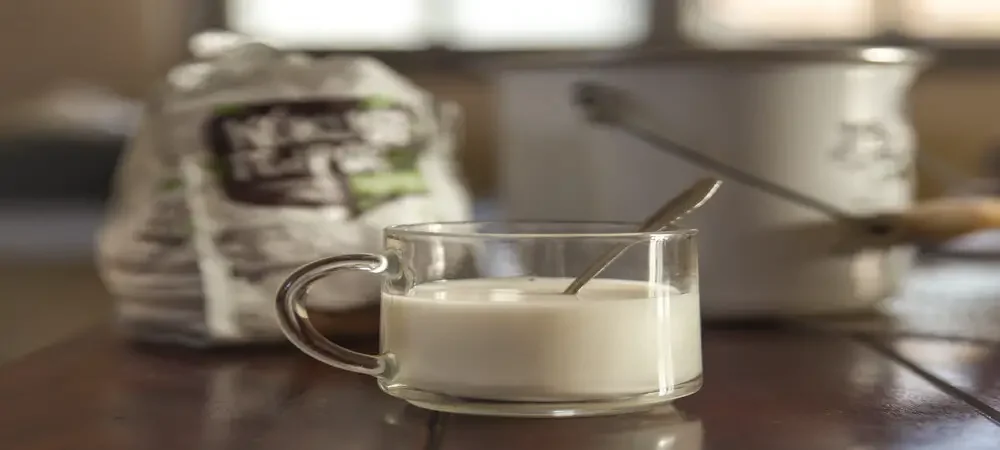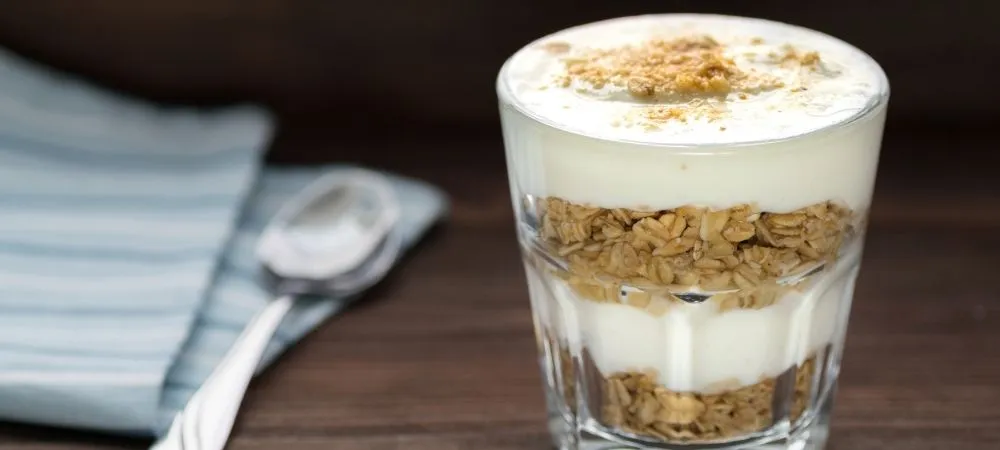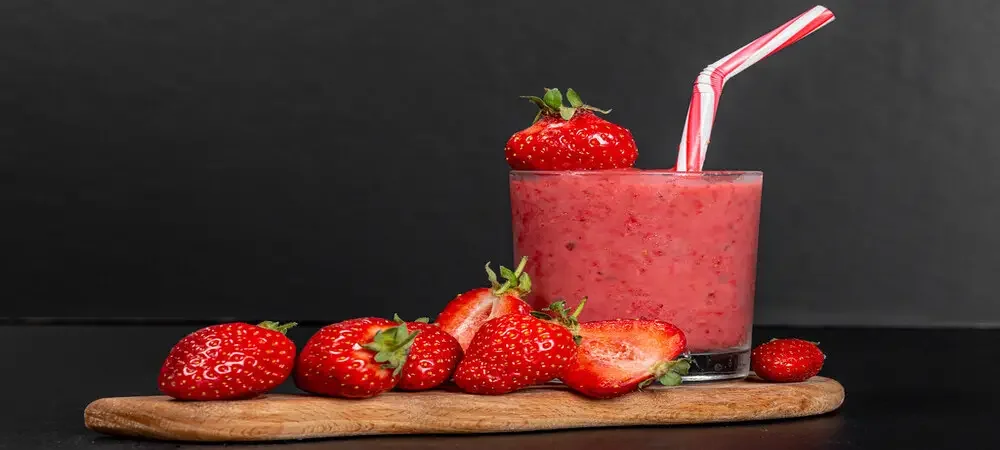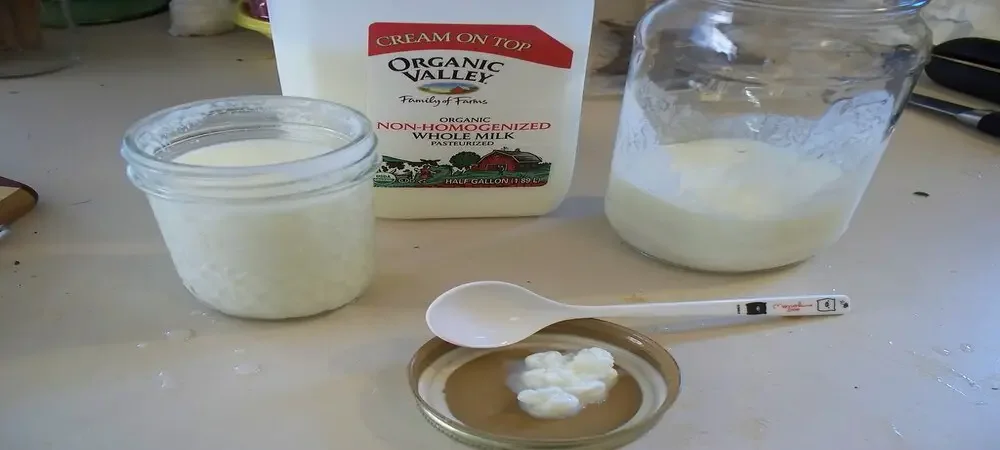Buttermilk is the liquid left behind after churning butter out of cream, according to Quora Users. More generally, the name is applied to several similar fermented dairy drinks, commonly sold in most grocery stores. Yogurt is one such prevalent fermented dairy that is used for making buttermilk.
In this blog post, we will discuss the recipe of making buttermilk using yogurt:
Yogurt (curdled milk) To Buttermilk: What Goes Into?
Yogurt is a fermented milk product prepared by fermenting the mixture of milk and specific bacteria/yeast. This fermentation process converts lactose to lactic acid, which gives yogurt its tart flavor. Many people prefer making yogurt at home than buying it from grocery stores, as they feel that the yogurt tastes better when they make it at home.
Different types of bacteria you can use to ferment milk, which produces different flavors and textures of yogurt. For the desired flavor, the ratio of milk to starter culture used in making yogurt is essential. If you add lesser starter culture (fewer bacteria), the mixture becomes more acidic and gives a sour taste. Yogurt with more bacteria takes more time to ferment but preserves longer as it has a higher pH.
You can also use yogurt to make buttermilk.
In this blog post, we will discuss the recipe of making buttermilk using yogurt:
Related Posts:
- How to make yogurt with yogurt maker?
- How to Make Strawberry Banana Smoothie without Yogurt?
- How to Make Lactose Free Yogurt?
- How to make Mango Smoothie Without Yogurt?
- How to Make Smoothie without Yogurt?
- How to make Yogurt from Pasteurized Milk?
- How to Make Chocolate Frozen Yogurt?
How to Make Buttermilk from Yogurt?

Ingredients needed: –
- 1 cup Plain yogurt/curd (Buy Here)
- 1 cup water
Step 1: Making Yogurt/Curd:
If you want to begin the process from scratch, you can consider making the yogurt at home. Although, working with store-bought yogurt will reduce your preparation time to 1/8. It is because, the process of yogurt fermentation takes long time.
If you are living in colder regions, it may take up to 8-10 hours for your yogurt to set. However, for warmer weather regions, it may take 5-6 hours to prepare yogurt.
- Heat 1 liter of milk on a stove or in the microwave.
- The quantity of milk used does not matter; what matters is that the total volume should be around 1 liter after heating.
- Make sure you use whole-fat cow’s milk for making curd, as the required fat content for making good yogurt is 3.25%.
- Skimmed milk will not produce good results, so do not use skimmed or low-fat milk to make yogurt. Do not add any starter culture at this stage, as it will be added later.
- Stir the mixture gently while heating to avoid scalding of the bottom layer.
- The milk will start boiling within 5 to 10 minutes.
- Once it starts coming up, lower the heat and let it come to a boil again.
- Repeat this process one or two times until the milk is boiled well enough.
- If using a microwave, bring the milk to a boil in 6-7 intervals of 2 min each, stirring after every interval.
- It will take around 15 minutes to boil the milk.
- Once the milk boils well, turn off the heat.
- Allow it to cool down to 104-110 degrees F (around 40 degrees C).
- You can check this using a candy thermometer or insert your clean finger inside the pot/container.
- If you cannot hold your finger at this temperature, the milk is not ready to set.
- Stir well once or twice while it cools down.
- Once the milk reaches around 110 degrees F, add 2-3 tablespoons of yogurt you had made earlier and mix it well.
- It must be at room temperature, so let the yogurt sit on the counter for some time before adding to the warm/hot milk.
- Do not add yogurt with starter culture at this stage, as the starter should be added only when the milk cools down.
- Cover and keep in a pre-heated oven for 6-8 hours or overnight to set the yogurt well.
- The oven light/heat will help maintain the required temperature to set the yogurt without any external heat.
- It can be prepared during night hours, and then yogurt will be ready to use the following day.
- If the oven is unavailable, keep it in a warm place (100 degrees F) for 8-10 hours or ferment at room temperature (75 degrees F) for 6-8 hours only.
- The time required for fermentation depends upon the surrounding temperature.
- The yogurt can be set/fermented in a casserole dish or any oven-proof pot for this purpose.
- Do not use aluminum pots, as these will react with yogurt and taint its taste.
Once the yogurt has set well (refer notes), you can either use it as is or whip it for making smooth yogurt.
Step 2: Making buttermilk from yogurt
- Once the yogurt is set, keep it in the fridge overnight to set properly.
- Whisk the Yogurt with blender on low settings for 30 minutes.
- Add some chilled water and whisk further till the butter separates.
- It will take almost 3-5 minutes to separate the butter from the mixture.
- Add some ice cubes to firm the butter to make it firm.
- Now strain the remaining liquid by removing the butter.
- Your buttermilk is ready to serve.
How much Buttermilk Can You Make From 1 Cup of Yogurt?

1 cup of yogurt can make about 3/4 cups of buttermilk.
For making good quality buttermilk, use whole-fat cow’s milk (minimum 3.25% fat). If using buffalo milk, the required fat content is 7%.
Do not use any other starter culture except the one that you had made in an earlier batch. Otherwise, it will alter the taste of the final product.
The yogurt will come out good only when the milk used is total fat (minimum 3.25% fat). Skimmed/low-fat milk will not produce good results, so do not use it to make yogurt.
If you use store-bought plain yogurt without any preservatives, then the shelf life of prepared yogurt is around 5 days when refrigerated at normal room temperature (72 degrees F). The longer the time for fermentation, the better the taste and texture of the final product will be.
Some Important Tips To Consider
- Keep the buttermilk a cooler place during the summer months to keep the prepared buttermilk cool.
- You can make yogurt at home without any unique ingredients (no thermometer, no heating pad, etc.). Just follow this simple recipe which needs nothing other than milk and starter culture.
- You should keep the yogurt at room temperature while fermenting. Cover the yogurt to avoid any odor in your microwave.
- Store-bought yogurt has more shelf-life than homemade yogurt. Keeping homemade yogurt for longer time may lead to a sour taste and an unpleasant odor.
If you have not used whole fat milk to make yogurt, then use either boiled water or 1% milk to thin down the buttermilk prepared from that.
- Usually, a 200 ml glass of whole fat yogurt will yield about 150 ml to 160 ml buttermilk (after adding water).
- Buttermilk prepared from 1 cup of plain homemade yogurt will reduce to about 1 cup flat buttermilk (or thick buttermilk as per your desire).
If you do not mind the little sour taste and aroma of yogurt, then use boiled water or cold water to dilute it for making buttermilk.
Homemade yogurt is very economical and nutritious too. It is a good idea to use it as a base for smoothies, milkshakes, etc. However, the taste and texture of such recipes made from homemade yogurt will vary slightly due to slight temperature changes (of milk used), the bacterial culture used, and fermentation time.
How Yogurt is Different from Buttermilk?
There was a frequent query on quora enquiring about Buttermilk Vs Yogurt – which one is better? And I am not able to find any satisfactory answer for that as well. So I decided to do some research on this to understand how both are different in terms of their nutritional value.
Compared to Yogurt, buttermilk comes with fewer calories. Yes! If you want to cut down calories from your recipe, it is always great to substitute buttermilk for yogurt. Both are rich in Vitamins but the vitamin component differs. Yogurt is high in Vitamin B2 and B12 while Buttermilk has more of Vitamin A and C.
If you compare the glycemic index, I found yogurt to be the winner with a lower GI. The GI of yogurt is around 14 while that of buttermilk stands at 24.
Frequently Asked Questions
Does Buttermilk Increase the Body Heat?
No! Buttermilk is a highly recommended summer drink. Traditional buttermilk is high in minerals and vitamins that restore your body’s natural energy. It actually cools down your body and also improves your metabolism.
Which is Good For Digestion – Buttermilk or Yogurt?
If you have a good digestive system, yogurt is a healthier choice. But if you want to soothe your irritated stomach line, buttermilk is a better option. According to Ayurveda, Buttermilk soothes hyperacidity, and stomach infections and is helpful in treating IBS.
What Happens If We Drink Buttermilk Daily?
Studies suggest that drinking buttermilk daily helps with lowering triglyceride and cholesterol in people struggling with high cholesterol levels.
What is the Right Time to Drink Buttermilk?
The best time to drink buttermilk is either in breakfast or in lunch.










